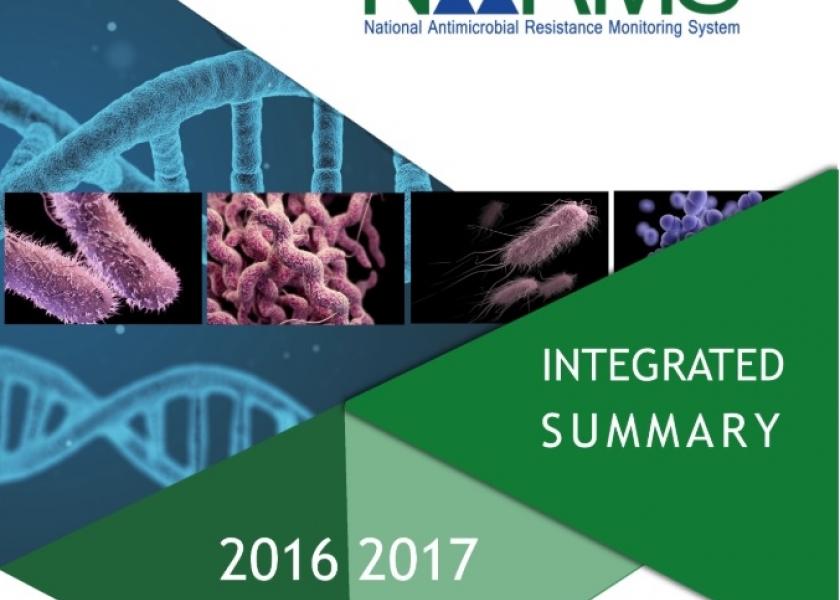NARMS Releases Latest Report on Antimicrobial Resistance Trends

This week, the National Antimicrobial Resistance Monitoring System (NARMS) released its 2016-2017 NARMS Integrated Summary, with a new streamlined format intended to enable NARMS partners to issue more timely public updates in the future. Those partners include the FDA, the Centers for Disease Control and Prevention (CDC) and the USDA’s Food Safety and Inspection Service (USDA-FSIS).
For the first time in the new report, NARMS includes data on animal pathogens from a pilot study with FDA’s Veterinary Laboratory Investigation and Response Network (Vet-LIRN).
In its effort to track trends in antimicrobial resistance, NARMS partners collect data on bacteria from humans (CDC), raw retail meats (FDA), and animals at slaughter (USDA).
Key findings in the new report include:
- Salmonella resistance to third-generation cephalosporins, fluoroquinolones, or azithromycin has increased. This is concerning as these drugs are considered first-line therapies to treat complicated infectious diarrhea in humans. The rise in Salmonella resistance to these drugs means that treatment with them may not always work.
- No resistance to carbapenems was observed among Salmonella isolates from humans, retail meats, and animals. This is important as carbapenems are typically reserved to treat suspected multi-drug resistant infectious diarrhea. In the U.S., carbapenems are not used in food animal production, however due to their importance in human health, they are monitored by NARMS.
- Rates of macrolide and fluoroquinolone resistance remain relatively unchanged in Campylobacter jejuni isolated from humans and chickens, and in Campylobacter coli isolated from cattle and swine. While it is positive that these rates of resistance did not increase, the rates of macrolide resistance in Campylobacter isolated from swine and fluoroquinolone resistance in Campylobacter isolated from cattle warrant further monitoring.
For more information from NARMS, see these online resources:
2016-2017 NARMS Integrated Summary
The National Antimicrobial Resistance Monitoring System
For more about antimicrobial resistance trends, see these articles from BovineVetOnline.com:
Antibiotic Stewardship: FDA Cites Progress







